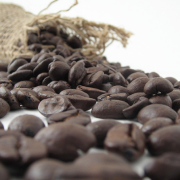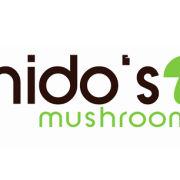Proteine aus organischen Abfällen
Proteine aus organischen Abfällen
By Markus Haastert and Anne-Kathrin Kuhlemann
Background: Feeding 10 billion people
IThe current research into human population has come up with some disturbing results. As it stands, by the year 2050 the world’s current population of 6.9 billion people could very well rise to staggering 9.6 billion. Taking into consideration that livestock farming currently takes up about 30% of land that is not completely covered in ice and that it is responsible for 18% of today’s global warming effect, it is not at all reassuring to know that if we follow the data, the livestock production will undoubtedly double by the year 2050 if we do not make some drastic changes in our eating habits.

The most notable reason for the increase in cattle farming is the nutritional value it has to human lifestyle, mainly the amount of protein it provides to us. The amount of protein we currently consume daily per person is 75.3 grams on average worldwide, 24.3 grams of which is pure animal protein. If we look at this situation from the biological point of view, it is not necessary for a human being to have the plant protein circulated trough animals before it is ingested. Plants like soybeans include all the necessary amino-acids for a human to function healthily. And to top it all off, the amount of water that is required to get 1kg of grain-fed beef is 100,000 liters; compared to that, soybeans ‚only‘ require 2,000 liters per 1kg.
With the arrival of modern technologies, many alternatives to meat were found for our protein fueled diets. One of the most notable substitutes is Mycoprotein, which is the protein contained in mushrooms. Mushrooms have been known to contain much larger amounts of protein compared to plants, up to 23 grams of protein per 100 grams of mushrooms. And these are all ‘complete proteins’ meaning they contain all the amino-acids that the human body needs to operate normally.
Lately a new way of cultivating mushrooms has appeared. As it stands, the dried up shells and pulp from coffee has proven to be an exceptional base for growing mushrooms as it increases their growth speed almost threefold. The other important benefit is that the artificial logs made this way are caffeine rich. The latest research has shown the caffeine from coffee beans to be a natural insecticide, reducing the growth of mushroom related pests by approximately 50%, and that dried tea leaves which contain up to three times more caffeine provide two to three times better effect.
Innovation(s): from food to packaging to soil remediation
This form of mushroom cultivation was practiced in developing countries for many years, but pioneered in the Western world by two Berkley University students in 2009. Nikhil Arora and Alejandro Velez were the first to create a brand out of coffee-grown mushrooms and with it they have started a small revolution in both the mushroom growing industry as well as waste disposal management. Following their lead, roughly a dozen companies have entered the market in Europe since 2010. Chido’s mushrooms in Germany and GRO-Holland in the Netherlands have established themselves with two different business models: GRO processes the coffee grounds from a single chain of coffee shops and then returns most of the fresh mushrooms produced on these to be sold in that same chain – thus reducing two of the major cost drivers in decentral mushroom production: logistics and sales. Chido’s mushrooms on the other hand focuses on producing a home growing kit from coffee waste, allowing customers to grow their product fresh right inside their own home.
Since then, many more companies have emerged: Fungi Futures, a company based in Devon, created the GroCycle Urban Mushroom Farm in an abandoned building right in the heart of the city. This helps provide the city’s restaurants with fresh product as well as spread the word about this new, environmentally friendly technique. Fungi Futures also offers a Kit for home production of mushrooms. British Espresso Mushroom Company also produce kits for home production, similar to RecoFunghi and Funghi Espresso from Italy, EK-Miro in Poland, RotterZwam from the Netherlands, Prêt à pousser and Boîte à Champignons from France, Perma Fungi in Belgium, Gumelo in Portugal or resetea and Seta’s pocket gourmet based in Spain – and others yet to come. In the past four years, almost every country in Europe has received a representative in the coffee-grown mushroom market, many of them receiving awards for their ecological business endeavours.
The best part is that the nutritional value of mushrooms is only a tiny part of what they can be used for. In 2007 a company named Ecovative presented an alternative to plastic made (grown) entirely from the mycelium of fungi. If production can become cheaper, this material might very well replace plastic and Styrofoam in the future, since it offers all of their benefits without the catastrophic impact on the environment.
Furthermore, fungi are one of nature’s most efficient ways to cleanse the soil. For this reason scientists like Mohamed Hijri of the University of Montreal’s Institut de Recherche en Biologie Végétale (IRBV) have been using fungi to purify the soil contaminated by heavy-metals, which would take thousands of years to become habitable again if left on its own.
Potential: fuel, cancer cure – and food security for all
In the future humanity should look to prevent the pollution caused by oil industry rather than trying to fix the damage after it was caused. For this reason people like Adrian Tsang, Professor of Biology at Concordia University, are looking for alternative ways to create biofuel. Since corn is mainly used for producing biofuel, many people find it controversial considering the food crisis plaguing some parts of the world. Prof. Tsang’s research is looking to replicate the chemicals used by fungi for decomposing plant material, allowing him to create biofuel from potentially wasted biological material, and reducing the disruption of the natural CO2 cycle.
The pharmaceutical industry has started taking interest in the benefits that mushrooms offer. It was discovered that fungi hold a strong antiviral potential. Since viruses can not be treated like bacteria wit antibiotics, many strains of mushrooms have shown a very useful ability to slow down viral enzymes and absorption of viruses into the cells of mammals. And with researchers like Paul Stamets, one of the most notable names in Mycology circles, constantly discovering new species and new information on the fungus genome, like for example the use of mushrooms for HIV and cancer treatment, the possibilities just keep piling up.
Many different industries have started taking interest in the possible uses of mushrooms. Everyone from pharmaceutical companies to waste disposal experts is finding the use of mushrooms in their fields. Construction companies can look forward to the development of the new fungal-based materials that may very well replace everything from plastic to materials used for house insulation. And environmentalists can hope to see the methods for reducing oil-company damage to the environment and maybe even completely preventing it, in the near future.
With all this being said, the most basic needs should come first. If mushroom cultivation is brought to peasants and smallholders around the world, a steady supply of mushrooms would become possible. This would first and foremost increase food security, since even crop failures can be used as substrate to grow healthy, protein rich food. A vision several NGOs have begun turning into reality.
Note:
This text was scanned to ensure it contains no plagiarism using plagscan.com.
![]() This work is licensed under a Creative Commons Attribution-NonCommercial-ShareAlike 4.0 International License.
This work is licensed under a Creative Commons Attribution-NonCommercial-ShareAlike 4.0 International License.
Sources:
http://www.news.cornell.edu/stories/1997/08/us-could-feed-800-million-people-grain-livestock-eat
http://www.new-harvest.org/wp-content/uploads/2013/04/AAB-food-security-conf_Tuomisto-2010.doc-Compatibility-Mode.pdf
http://www.powerofmushrooms.com.au/health-nutrition/health-nutrition/protein-carbohydrates/
http://www.telegraph.co.uk/foodanddrink/10333559/Word-of-mouth-The-Espresso-Mushroom-Company.html
http://www.fastcoexist.com/1679569/petroleum-eating-mushrooms-to-decontaminate-our-most-polluted-sites
http://www.genomequebec.com/18-en/environment-capsule-fossil-fuel-shortage-do-mushrooms-hold-the-key-.html
http://cleantechnica.com/2008/10/09/mushroom-enzyme-could-make-clean-fuel-cells/
http://gizmodo.com/the-futuristic-material-that-will-replace-plastic-is-511544462
http://www.recofunghi.com/
http://www.boczniaki.intarnow.pl/?page_id=228
http://www.setaspocket.com/
http://espressomushroom.co.uk/
- http://www.pilzeaufkaffee.de
Bilder:
https://www.flickr.com/photos/usdagov/11180541284
https://www.flickr.com/photos/unitedsoybean/10058871053
https://www.flickr.com/photos/robadob/523390303
https://www.flickr.com/photos/sidelong/1119505806






